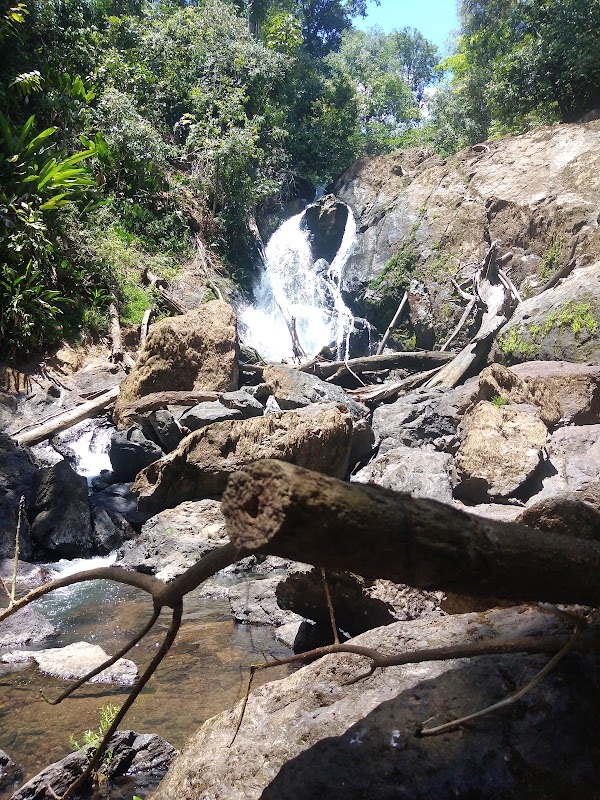Top Day Trips From Puerto Jiménez: Exploring Osa Peninsula’s Waterfalls and Wildlife Trails
From Puerto Jiménez, the Osa Peninsula offers thrilling day trips through waterfalls that roar and trails alive with wildlife. This practical guide covers must-see spots, trail details, and tips to help you prepare for an unforgettable outdoor adventure in one of Costa Rica’s wildest corners.
Start Early to Beat the Heat
Morning hikes, especially to waterfalls, mean cooler temperatures, less crowded trails, and better chances to spot active wildlife before midday.
Bring Waterproof Footwear
Trails can become muddy and slippery, particularly during the rainy season; durable, water-resistant shoes ensure safe footing and comfort.
Pack Sufficient Water and Snacks
Stay hydrated and energized – many trails have no facilities, so carrying water and high-energy snacks is key to maintaining stamina.
Use Insect Repellent
The humid rainforest environment harbors numerous insects; repellent reduces discomfort and lowers risk of bites from mosquitoes or other biting insects.
Top Day Trips From Puerto Jiménez: Exploring Osa Peninsula’s Waterfalls and Wildlife Trails
Just a short drive from Puerto Jiménez, the Osa Peninsula unfolds like a living, breathing adventure. Its waterfalls roar with the force of untamed rivers that dare you to come closer, while the wildlife trails push forward through thick rainforests where capuchin monkeys chatter overhead and colorful birds flash between the leafy branches. This guide highlights the best day trips to explore these natural wonders without losing your footing in logistics.
Start your journey with the Nauyaca Waterfalls, a local favorite roughly 3 kilometers from the trailhead. The path is a steady 180-meter elevation gain through open woodland and shaded forest patches, footing mostly firm but sometimes slippery after rain. Early mornings are best to avoid afternoon crowds and to catch the mist rising like a veil off the falls. Wear sturdy shoes with good grip and prepare to dip into the cool pools to refresh before completing your round trip, which averages 2.5 hours.
Next, venture toward the Sirena Ranger Station in Corcovado National Park. This is a more demanding trek—up to 15 kilometers roundtrip with varied elevation and muddy sections during wet season months. The trail edges rivers that seem to pull your attention with their rushing currents, and the dense canopy arches above like an ancient guardian. Along the way, watch for toucans and howler monkeys, as well as the elusive tapir footprints pressed into soft earth. The trek requires moderate fitness; pack plenty of water, insect repellent, and a waterproof jacket.
For a shorter option, the Piro Wildlife Trail near Puerto Jiménez offers a 4-kilometer loop through secondary forest and riverside terrain. It’s gentle on elevation and perfect for spotting coatis and tinamous. The forest here leans heavily with vegetation that brushes against your shoulders; the air is thick but scented with earth and damp leaves. Timing your visit before midday is ideal to hear birds warming up and to avoid afternoon heat.
Whichever trail you choose, preparation makes the experience rewarding. Hydrate frequently, wear layered clothing for changing conditions, and carry essentials like a map or GPS device. Respect the environment, listening to the forest’s subtle cues while you navigate.
The Osa Peninsula’s waterfalls and wildlife trails are not just hikes; they’re encounters with a landscape fiercely itself, inviting you to move carefully but eagerly through its wild heart. Each step connects you more deeply to the raw, dynamic forces shaping this part of Costa Rica.
Nearby Trips
All Adventures
Boat Charters
Water Activities
Adventures near Puerto Jiménez
Discover the unique and memorable adventures that make Puerto Jiménez special.
Frequently Asked Questions
What wildlife might I encounter on these trails?
Expect to see capuchin monkeys, toucans, coatis, and, if lucky, tapirs and ocelots. Early mornings increase chances of wildlife activity.
Are the trails well marked and safe for solo hiking?
Most main trails are clearly marked, though some routes can be slippery or uneven. Solo hikers should stay on designated paths and inform local guides or accommodations of their plans.
Can I swim in the waterfalls?
Yes, swimming is typically safe in designated pools below the waterfalls, but check local advice since currents can be strong, especially after rains.
How do I arrange transportation to these trailheads from Puerto Jiménez?
Taxi services and shuttle options are common in Puerto Jiménez. Renting a bike or 4x4 vehicle is popular for more remote access but requires road awareness during rains.
Are guided tours necessary or recommended?
Guides enrich the experience by pointing out wildlife and ensuring safe navigation, particularly in Corcovado National Park, but casual hikers can also explore shorter trails independently.
Is there any entrance fee for these trails?
Corcovado National Park charges an entrance fee managed by SINAC; other waterfalls and trails near Puerto Jiménez are usually free or require a small access fee maintained by local communities.
Recommended Gear
Waterproof hiking shoes
Keeps feet dry and provides grip on muddy or slick surfaces.
Lightweight rain jacket
Protects from sudden downpours and keeps body temperature regulated.
Hydration pack or water bottles
Helps maintain hydration on trails without potable water sources.
Insect repellent
Essential for reducing insect bites in humid rainforest areas.
Local Insights
Hidden Gems
- "The quiet viewpoint at Rio Claro offers an unobstructed panorama of distant mountain ranges rarely visited by day-trippers."
- "A side trail near Piro Wildlife Trail that leads to a natural salt lick attracting peccaries and deer."
Wildlife
- "Brightly colored motmots that flash their tails in the forest light."
- "Spectacled caimans often resting in calm river bends during early morning."
History
"The Osa Peninsula's indigenous peoples and early settlers left behind trails and ruins that intersect with some park pathways, revealing centuries-old connections between humans and this wild landscape."

